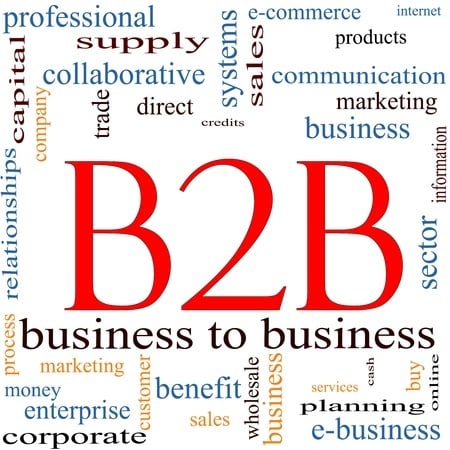This is a draft excerpt from the upcoming book, What’s Your Green Goldfish? Beyond Dollars: 15 Ways to Create Employee Loyalty and Reinforce Culture.
You never get a second chance to make a first impression
Attitudes begin to form at the initial point of contact with an organization. There is no better place to start applying G.L.U.E. than when you are welcoming new employees to your company. Smart companies take advantage of these early days in order to ensure a strong, productive, and dedicated workforce.
The way you manage the transition of somebody into your culture speaks volumes about the culture to the person coming in, because you’re making those first early impressions and they know what’s expected of them” says George Bradt, managing director at PrimeGenesis in an interview with Inc.com.
First Step
 This first step or transition process is called onboarding. According to Wikipedia, here’s the definition:
This first step or transition process is called onboarding. According to Wikipedia, here’s the definition:
Onboarding, also known as organizational socialization, refers to the mechanism through which new employees acquire the necessary knowledge, skills, and behaviors to become effective organizational members and insiders. Tactics used in this process include formal meetings, lectures, videos, printed materials, or computer-based orientations to introduce newcomers to their new jobs and organizations.
Unfortunately less than 25% of organizations have a formal onboarding process. According to onboarding expert Bradt,
Most organizations haven’t thought things through in advance. On their first day, they are welcomed by such confidence?building remarks as: Oh, you’re here… we’d better find you an office.
Why Onboarding?
Research shows that employees make the critical decision to stay or leave within the first six months and that having the newest talent participate in an onboarding program can “maximize retention, engagement, and productivity.” (Source: HCI White Paper, 2008) Socialization efforts lead to positive outcomes for new employees, including higher job satisfaction, better job performance, greater organizational commitment and reduction in stress.
Yet, culturally onboarding new hires can be a real challenge. While sleek videos, laminated pocket cards and lobby placards may help employees memorize the company values, the actual understanding how to “live” the company values can be a whole other story. Your culture is only as cohesive as the people willing to live out the shared values. Takeaway: Actions speak louder than words.
Having a diverse range of ways to welcome a new hire is critical to establishing a healthy employer-employee relationship. Here are a baker’s dozen of companies that purposefully go the extra mile to engage new team members:
Welcome Wagon
At JM Smucker (#575) new hires get a gift basket sent to their homes. (Source: Business Insider)
Intel’s (#534) new hires have dedicated greeters and gifts waiting for them when they arrive on their first days as a part of their hands-on new employee orientation. (Source: Business Insider)
Online glasses manufacturer Warby Parker (#171) gives a welcome package to new employees which includes a founder’s favorite pretzels and a gift certificate to a Thai restaurant, since the founders lived off Thai food during their startup phase.
Buddies and Sponsors
Capital One (#361) runs a Buddy Assimilation Program. The program matches veterans with newcomers. “Buddies” like show the newbies around, have lunch with them and act as a resource. After a month of training, new employees work “in the nest” for two weeks, fielding incoming calls with plenty of support. Hands go up whenever a trainee has a question, and a roving supervisor runs over to help. Once on their own, employees work within teams. But they’re never far from a helping hand as team leaders and “floor walkers” decked in bright red and yellow vests are always available to answer questions. (Source: Tampa Bay Tribune)
Every associate at ladder(less) W. L. Gore & Associates (#539) has a sponsor who coaches, mentors, and commits to helping that person succeed at the company. (Source: Business Insider)
Understanding the Business
USAA (#456) figuratively runs a Boot Camp. The insurance provider for military members and their families has an interesting onboarding process for new employees. Training includes trying on military fatigues, eating MRE’s (ready to eat meals) and reading letters from family members. (Source: Jeanne Bliss)
Exposure makes a difference in performance. According to Fast Company, that’s the finding of Adam Grant, a Wharton professor who studied the training given to 71 new call center employees of a Midwestern software firm:
One group of trainees was chosen to meet an “internal customer”– an employee of another department whose salary depends on the sales that the new hires make–during their initial training. In combination with some inspirational words from the CEO, this contact with a real live beneficiary significantly improved both sales and revenue during the employees’ first seven weeks. The difference? A not-insignificant 20% improvement in revenue per shift. Leadership messages from the CEO about purpose, vision, mission, and meaning, however, had no such effect on their own.
Writing the ship
According to Harvard Professor and noted author Teresa Amabile, the ability to track small wins can help to motivate big accomplishments. Rituals like writing in a diary can be a strong influencer. The number one driver for inner worklife is making progress on meaningful work. Reflection can become an important part of the process.
New hires at custom t-shirt company CustomInk (#514) receive a blank journal. They are encouraged to record any interesting things they learn about the company in their notebook during their orientation or any questions they would like to ask. New hires are also asked to record instances where they’ve seen CustomInk’s values in action. At the 30 day mark, new hires convene to share what they’ve noted in their journals. Making new hires accountable for noticing how their colleagues and managers live those values every day helps brings those behaviors to life. (Source: Great Places to Work)
Gamify
New employees at Snagajob (#703), are asked to share their unique talents and experiences in a brief questionnaire and the answers are shared among employees over the company’s employee-only online network. When new hires are introduced at weekly company-wide meetings, employees are quizzed about the responses and get token rewards such as candy for each correct answer. “It’s a fun way to hold our employees accountable for learning about our new snaggers,” says Betsy Kersey, whose title at Snagajob is Director of People. (Source: Entreprenuer.com)
Returnships
TD Bank (#489) worked with the University of Toronto’s Rotman School of Management to develop the Rotman Back to Work program for women who have been out of the workforce for over eight years — and operates the in-house “Back to Business” rotational work program for women returning to work.
Check-Ins
When employees join Davies PR (#723), they are given a 3-month, 6-month, 9-month and annual review to ensure they get a “Best Start” at Davies. After one year at the company, employees receive annual 360 degree reviews in which they are assessed by their co-workers. (Source: PR News Online)
Technology Spurring Dialogue
Companies are using new tools and procedures to assimilate its latest hires. Veson Nautical (#827), a Boston-based software developer for risk management for the maritime industry, just instituted a new program in January called “FastStart,” an online tool from consulting firm BlessingWhite that aligns work styles and priorities between new employees and managers.
“The manager ranks the skills important and less important to the job, and the employee does the same,” says Sarah Taffee, director of human resources and organization effectiveness at Veson Nautical. “The employee has the opportunity to compare their own answers with their manager’s answers, and then the system guides them through how to have an open discussion about those things.” (Source: Inc.com)
Finding Your Way & Lost in Space
Box.net (#825) gives entry level employees three months to explore all the different departments of the company and you train them so that they know your products and services backward and forward—and then you allow the employee to choose what department they feel is the best fit for them. (Source: Inc.com)
There is one program at Brazilian manufacturer Semco (#787) that allows people to act like entrepreneurs at the company. Called “Lost in Space”, it assumes that young recruits don’t know what they want to do with their lives. The program lets them roam the company for a year. They do what they want to do, move when they want to move, go where their interests take them; work for one, two, or six different units. At the end of the year, anyone they’ve worked for can offer them a job, or they can seek an opening in an area that interests them. If neither happens… we thank them for the year. (Source: Ricardo Semler The Seven Day Weekend)
Today’s Lagniappe (a little something extra thrown in for good measure) – Here’s a four minute video from Wells Fargo on onboarding:

All of the examples in this post were taken from the Green Goldfish Project. The Project is a quest to find 1,001 examples of marketing lagniappe for employees. Green goldfish are the little signature extras given to employees. They help differentiate a company, reinforce culture, increase retention and drive positive WoM. The book, “What’s Your Green Goldfish?” will be published on March 29, 2013.



